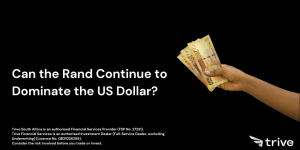
The USDZAR currency pair has shown notable volatility recently, captivating investors and traders alike. Over the past few weeks, the South African Rand appreciated against the U.S. Dollar, leading the USDZAR to test a five-month low. However, the tide turned last week as the USDZAR gained 1.44%, ending a four-week losing streak for the Dollar.
This shift was fuelled by robust U.S. economic data, which bolstered the Greenback. The upbeat data increased expectations that the Federal Reserve might postpone interest rate cuts until later this year. As a result, the U.S. Dollar found its footing, reversing the Rand’s prior gains.
Looking ahead, the USDZAR will likely be influenced by key developments in both countries. South Africa faces a pivotal election on May 29, followed by an interest rate decision from the South African Reserve Bank (SARB) the next day. Meanwhile, the U.S. will release the PCE Price Index, the Federal Reserve’s preferred inflation measure. These events are set to shape the USDZAR’s trajectory, making it a focal point for market watchers eager to understand the interplay of economic policies and market dynamics.
Technical
The USDZAR currency pair has shown a marginal uptick at the start of the week, indicating the Greenback’s resilience. Initially, the pair traded in a clear downtrend, positioned below its 100-day moving average and following a descending channel pattern. This downtrend saw the USDZAR reach a five-month low at the 18.02991 level, a critical support level. At this point, oversold conditions in the Relative Strength Index (RSI) suggested a potential rebound, which materialized with significant daily gains last week.
Breaking out of the descending channel and surpassing the 100-day moving average, the USDZAR was supported by robust upside volumes. However, the upward momentum stalled at the 18.50080 level amid overbought RSI conditions, opening the door for some bearish activity. The pair subsequently retraced to the 23.60% Fibonacci Retracement level.
If downside momentum persists, traders might eye the 50% Fibonacci Retracement level as a potential target. Conversely, if the upward momentum regains strength, the USDZAR could retest the 18.50080 resistance level, drawing interest from traders hopeful for a sustained recovery of the U.S. Dollar.

Summary
The USDZAR’s future hinges on key levels and events. With the pair currently near the 23.60% Fibonacci Retracement level, traders are likely to watch for a move toward the 50% level if bearish momentum persists or a retest of 18.50080 if the Dollar strengthens further, driven by economic developments.
Sources: Reuters, TradingView
Piece Written By Nkosilathi Dube, Trive Financial Market Analyst
Disclaimer: Trive South Africa (Pty) Ltd (hereinafter referred to as “Trive SA”), with registration number 2005/011130/07, is an authorised Financial Services Provider in terms of the Financial Advisory and Intermediary Services Act, 37 of 2002. Trive SA is authorised and regulated by the South African Financial Sector Conduct Authority (FSCA) and holds FSP number 27231. Trive Financial Services Ltd (hereinafter referred to as “Trive MU”) holds an Investment Dealer (Full-Service Dealer, excluding Underwriting) Licence with licence number GB21026295 pursuant to section 29 of the Securities Act 2005, Rule 4 of the Securities Rules 2007, and the Financial Services Rules 2008. Trive MU is authorized and regulated by the Mauritius Financial Services Commission (FSC) and holds Global Business Licence number GB21026295 under Section 72(6) of the Financial Services Act. Trive SA and Trive MU are collectively known and referred to as “Trive Africa”.
Market and economic conditions are subject to sudden change which may have a material impact on the outcome of financial instruments and may not be suitable for all investors. Trive Africa and its employees assume no liability for any loss or damage (direct, indirect, consequential, or inconsequential) that may be suffered. Please consider the risks involved before you trade or invest. All trades on the Trive Africa platform are subject to the legal terms and conditions to which you agree to be bound. Brand Logos are owned by the respective companies and not by Trive Africa. The use of a company’s brand logo does not represent an endorsement of Trive Africa by the company, nor an endorsement of the company by Trive Africa, nor does it necessarily imply any contractual relationship. Images are for illustrative purposes only and past performance is not necessarily an indication of future performance. No services are offered to stateless persons, persons under the age of 18 years, persons and/or residents of sanctioned countries or any other jurisdiction where the distribution of leveraged instruments is prohibited, and citizens of any state or country where it may be against the law of that country to trade with a South African and/or Mauritius based company and/or where the services are not made available by Trive Africa to hold an account with us. In any case, above all, it is your responsibility to avoid contravening any legislation in the country from where you are at the time.
CFDs and other margin products are complex instruments and come with a high risk of losing money rapidly due to leverage. You should consider whether you understand how these products work and whether you can afford to take the high risk of losing your money. Professional clients can lose more than they deposit. See our full Risk Disclosure and Terms of Business for further details. Some or all of the services and products are not offered to citizens or residents of certain jurisdictions where international sanctions or local regulatory requirements restrict or prohibit them




